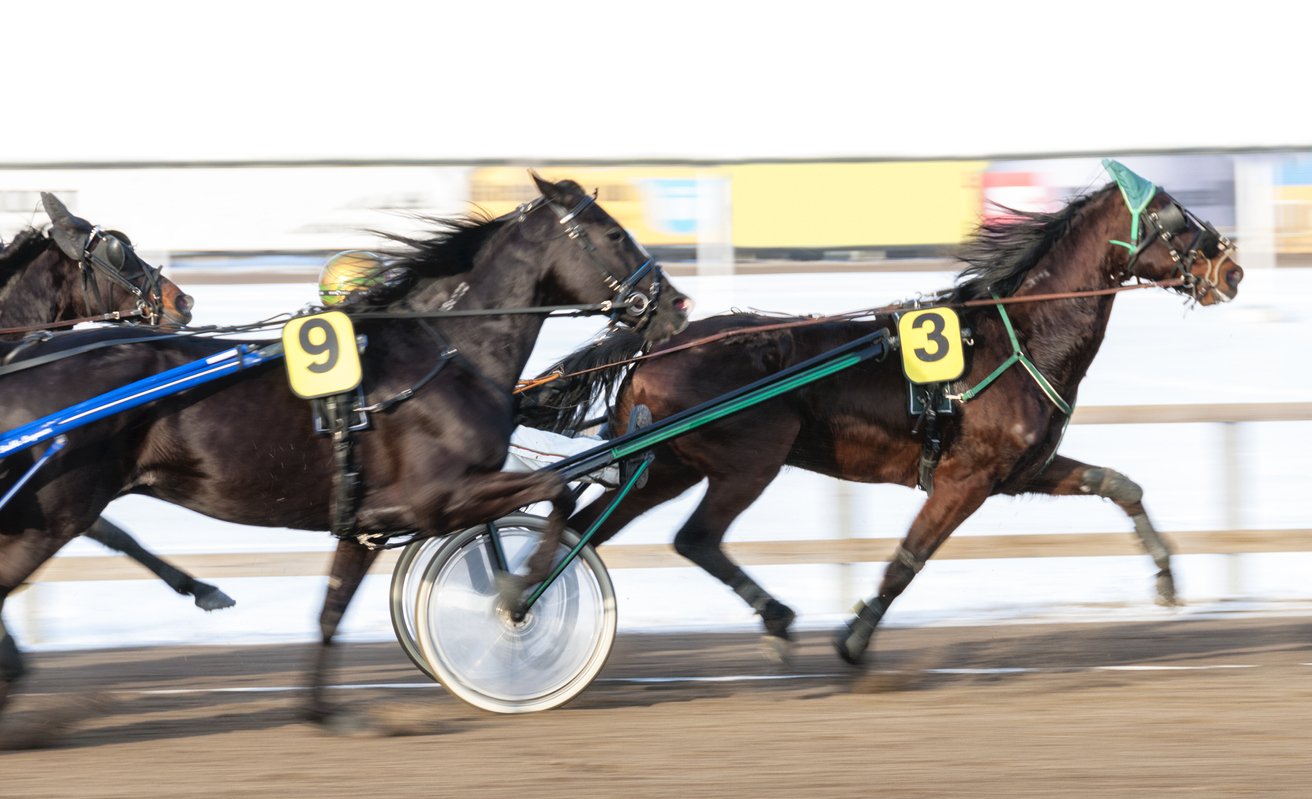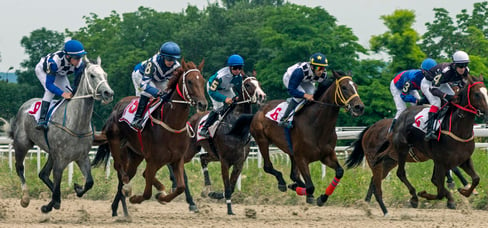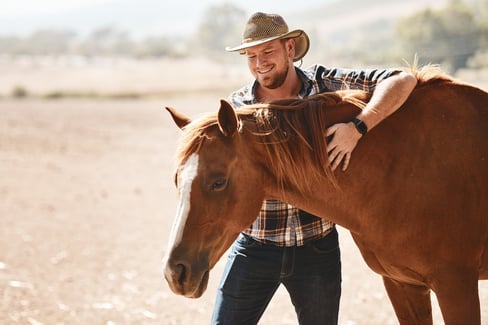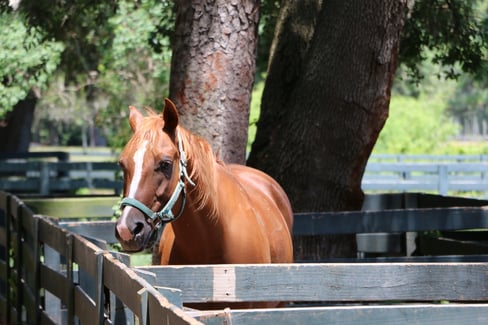Table of Contents
Have you been thinking about getting into standardbred racing? Maybe you’re already involved in the sport, but you’re looking to take things to the next level.
Standardbred racing has a long history, and plenty of interesting things to learn along the way and that means there are plenty of experts to glean advice from.
In this post, we’re going to break those pro tips down, as well as get into the ways you can prevent injury for your standardbred racing horse so you can spend more time in the winner’s circle and less on the sidelines.
Ready to learn? Let’s harness up and get into it!
History of Standardbred Racing Canada
The history of standardbred racing Canada is certainly a longer one than you might think.
Beginning in 1869 when John H. Wallace began keeping a record of gaited horses, publishing The American Trotting Registry, standardbred racing in North America gained popularity.
Even in the early days, Canadian standardbred racing horses were emerging as leaders in the sport and the formation of official registration helped accelerate the sport’s legitimacy. In 1914, the Canadian Standardbred Horse Society was formed and began creating a registry of the breed in Canada. By 1939, the Canadian Trotting Association was keeping records and was the licensing body for standardbred racing in Canada.
The two organizations remained separate until 1998 when they joined together to become today’s governing body, Standardbred Canada. Their role in today’s racing landscape is to maintain, store and supervise records, distribute information, and promote harness racing within the country and beyond its borders.
Standardbred Racing Records
When you’re working on making your horse’s way to the top, it’s important to not only understand the history of racing but who is currently on top. That means you’ll need to know how to check standardbred Canada racing results.
You can see results for the fastest horses in Canada, North America, and the world. You can also sort records by type of standardbred harness racing horses.
In standardbred racing, you can either have a horse participate in either trotter races or pacer races.

As seen in the image above, the difference between pacing and trotting is in their gait, or how they move. A trotter moves their legs forward on either side alternatively, while pacers move their front and back legs forward on the same side at the same time.
There are different standardbred racing records for the two forms of racing, as well as for the variations on distance. Standardbred racing records also take age and breeding into account and can be hard to understand for the uninitiated.
Here are a few important terms to know when reviewing standardbred Canada racing results:
| Term | Definition |
| Dam | The horse’s mother |
| Sire | The horse’s father |
| Colt | A horse 3 years or younger that is male |
| Filly | A horse 3 years or younger that is female |
| Gelding | Any male horse that has been altered (neutered) |
| Horse | Any male horse 4 years or older that is unaltered |
Standardbred Racing Facts
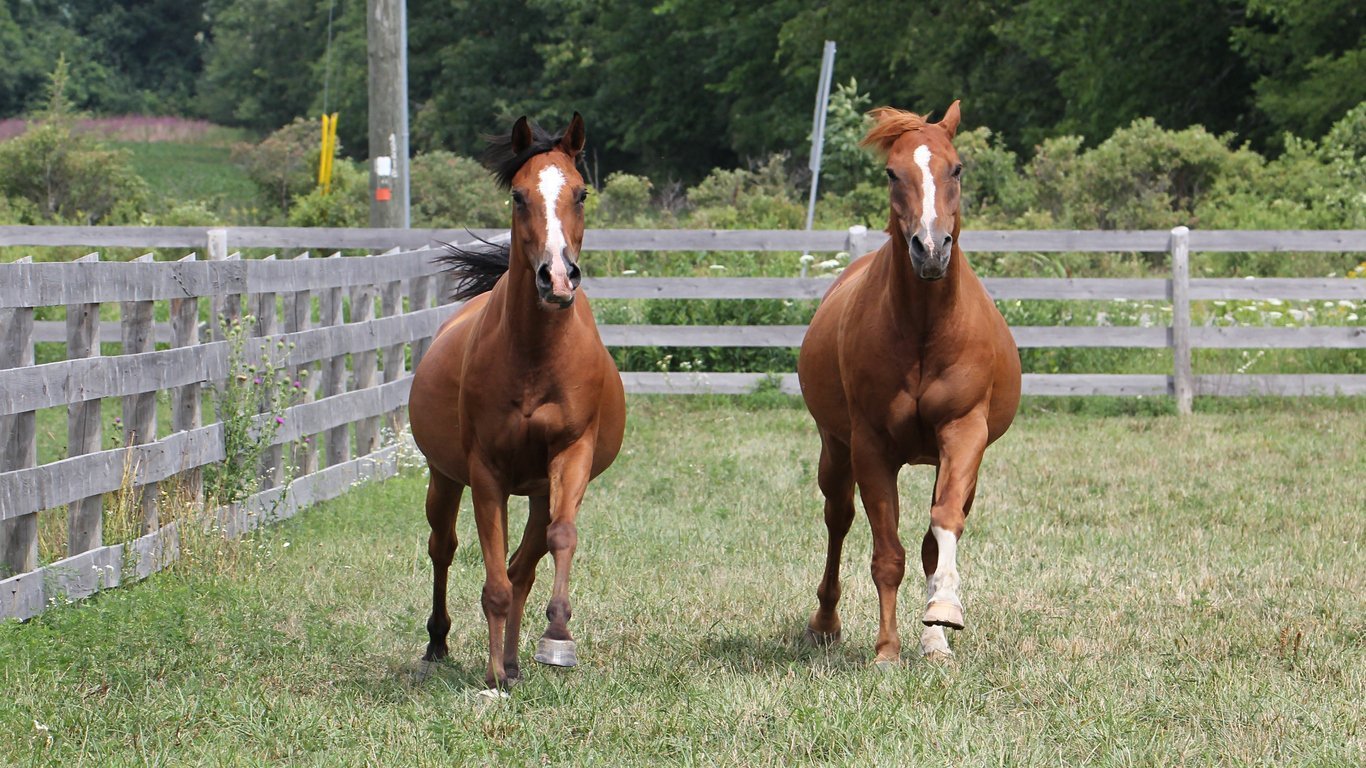
Getting into a sport like standardbred horse racing can be daunting at the outset — so why not get started with some fun facts? Even experienced standardbred horse racing pros have to refresh their knowledge once in a while.
Ready? Let’s get off to the races!
Sport by Two Names
If you’ve been reading up on standardbred racing, you’ve probably heard standardbred horse racing referred to as standardbred harness racing.
And a first glance may not reveal that they are the same thing, but they are in fact, the same sport.
That name comes from the harness horses wear to pull the driver behind them. It is part of a highly specific set of gear that comes with the sport (more on that later).
Family Ties
Most standardbreds today can trace their lineage to one horse – Hambletonian.
Coming from humble beginnings, Hambletonian was the great-grandson of Messenger, a horse known as the foundation of all standardbred horses. Not thought to amount to much as a foal, he was sold to William Rysdyk for $125 and went on to outperform expectations. Eventually, he would become the father of dozens of winning horses, leading to his offspring’s eventual domination of the breed for years to come.
Going the Distance
Like many kinds of horse racing, standardbred racing has a typical distance every event uses as a guideline.
Most races are a mile long, but sometimes, for special events or to switch things up, you will see other races go for a distance of five eights of a mile or a half-mile.
In the early days of the breed, any horse who could trot or pace a mile in a set period of time (2 minutes and 30 seconds) was registered as a standardbred because they met a “standard” of time. And while things have changed today, and breeding is more refined, standardbred racing is still very much rooted in speed and consistency.
Ride Along
One way to identify yourself as a rookie in standardbred racing? Call the person driving the cart behind your horse a jockey.
Unlike some other horse racing sports, the person riding in the cart behind the horse (also referred to as a sulky) is called a driver and not a jockey.
Also unlike other kinds of racing, standardbred racing allows for drivers to be of any gender, age (over sixteen) or weight, allowing for more people to participate in the sport overall.
Your Chariot Awaits
Standardbred racing has a longer history than you’d think!
Standardbred harness racing, also known as standardbred racing today, traces its earliest roots to the Olympic Games in the 7th century BCE, where four-horse hitch chariot races enthralled ancient citizens just as races today captivate trackside audiences. Ancient cultures such as the Romans were so enamoured of chariot racing, during the reign of Flavius (from 69 to 96 CE) there could be 100 chariot races a day, complete with racing professionals, starting chutes, and even widespread gambling!
The Roman empire fell, and chariot racing faded into memory for many, not seeing a modern revival until Europeans began taking up the sport in the late 1700s. Growing in popularity, by the mid-1800s, harness racing made its way to a thriving circuit among agricultural fairs in North America, particularly in eastern and central Canada and the US. Within decades, the sport became mainstream and remains popular today.
5 Pro Standardbred Racing Preparation Tips
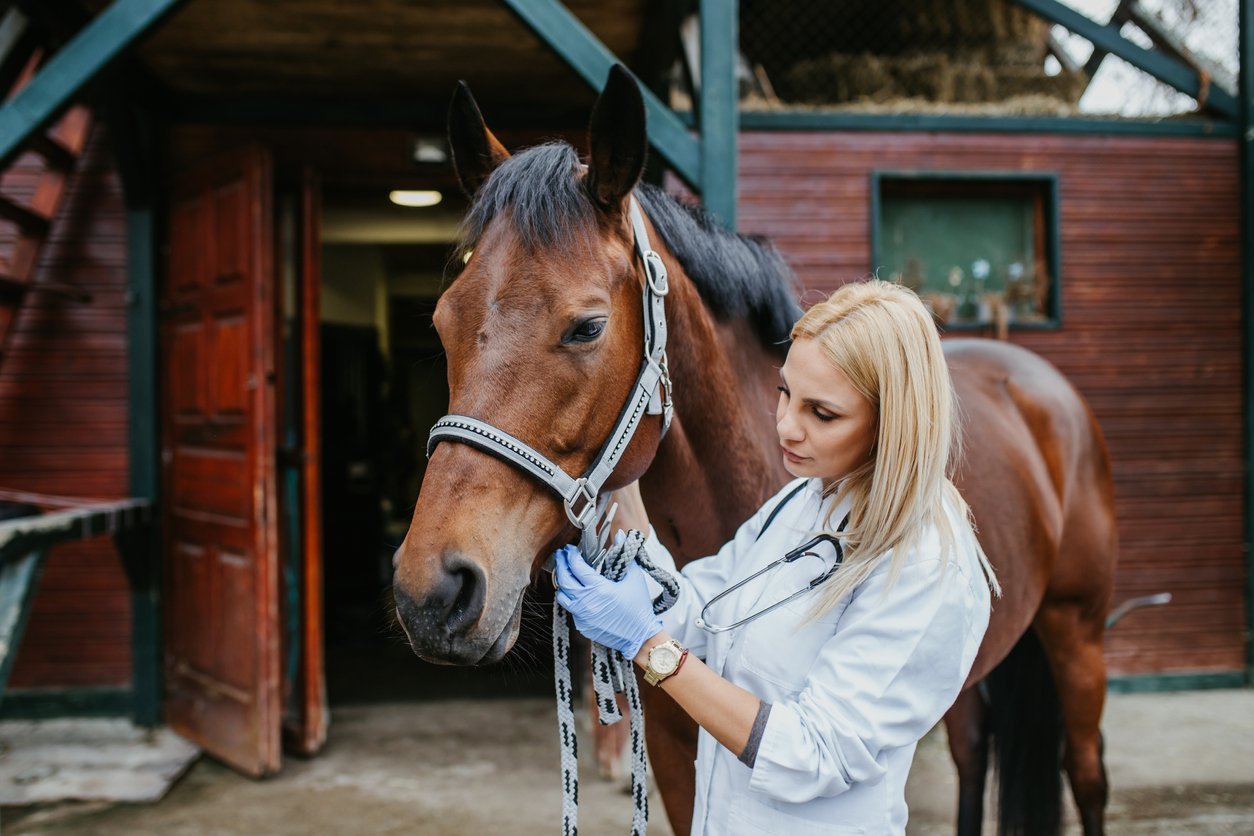
Before you can seek out the first-place prize in standardbred racing, you need to prepare your horse properly.
From health to proactive practices, there’s plenty on your to-do list as the owner of a standardbred horse!
1. Keep Equine Health In Check
You keep yourself in good health by visiting the dentist and the doctor, learning about healthy living, and watching out for problems, among other activities.
Applying that same logic to caring for a standardbred racing horse is really the ticket to keeping equine health in check.
In order to perform their very best, you have to make sure your horse has regular visits from the farrier for shoeing appointments and hoof checks. Farriers can help keep an eye out for common horse health issues, as well as make sure shoes are fitted to your horse’s hooves appropriately.
Regular visits from the equine vet are also needed to make sure your horse is in good condition and isn’t in need of any medical attention. Something you can do between vet visits is to monitor your horse’s behaviour and temperament. When something is off, you’ll be able to spot it first because you know your horse best. As soon as you notice something out of the ordinary, it’s time to pick up the phone and call your vet.
2. Ensure Good Horse Nutrition
A horse needs balanced nutrition in order to perform at a high level.
Our horse pals need to be fed a diet that consists of five key components, plus plenty of water to keep them hydrated.
It should be noted that while horses typically need the same things, each horse is unique and all equine nutrition plans should be created in collaboration with professionals like a vet in order to ensure your horse is getting the nutrition they need.
The table below shows the basic components of a standardbred racing horse’s diet.
| Component of Standardbred Racing Diet | Why It’s Important |
| Carbohydrates | Breaks down in the hindgut and is metabolized into energy |
| Proteins | Necessary for growth and maintenance of horse bodies |
| Fats | Easily digestible source of energy |
| Vitamins | Help enable important reactions in a horse’s body essential to their whole functioning, such as thiamine, which helps a horse metabolize other nutrients |
| Minerals | Inorganic compounds that are needed in specific quantities for a horse to function properly, including calcium and phosphorus |
3. Invest in Proper Equipment
You need the right equipment to get the job done.
That is true for almost anything in the sporting world, but especially when it comes to horses.
In order to participate in standardbred horse racing, you’re going to need to invest in the following kinds of equipment:
- A tack trunk
- Protective equipment for your horse such as knee boots or shadow rolls
- Grooming gear
- Recovery equipment for your horse (such as stall wraps)
- Blankets & coolers
- Hopples and harness
- Sulky (for racing)
- Jog cart (for practicing)
You may not need to buy the fanciest, or even brand new, equipment when you’re just starting out. Seek out pre-owned equipment or ask your colleagues for advice about where and when to shop for your gear to avoid overpaying and buying unnecessary equipment.
4. Administer Horse Joint Supplements
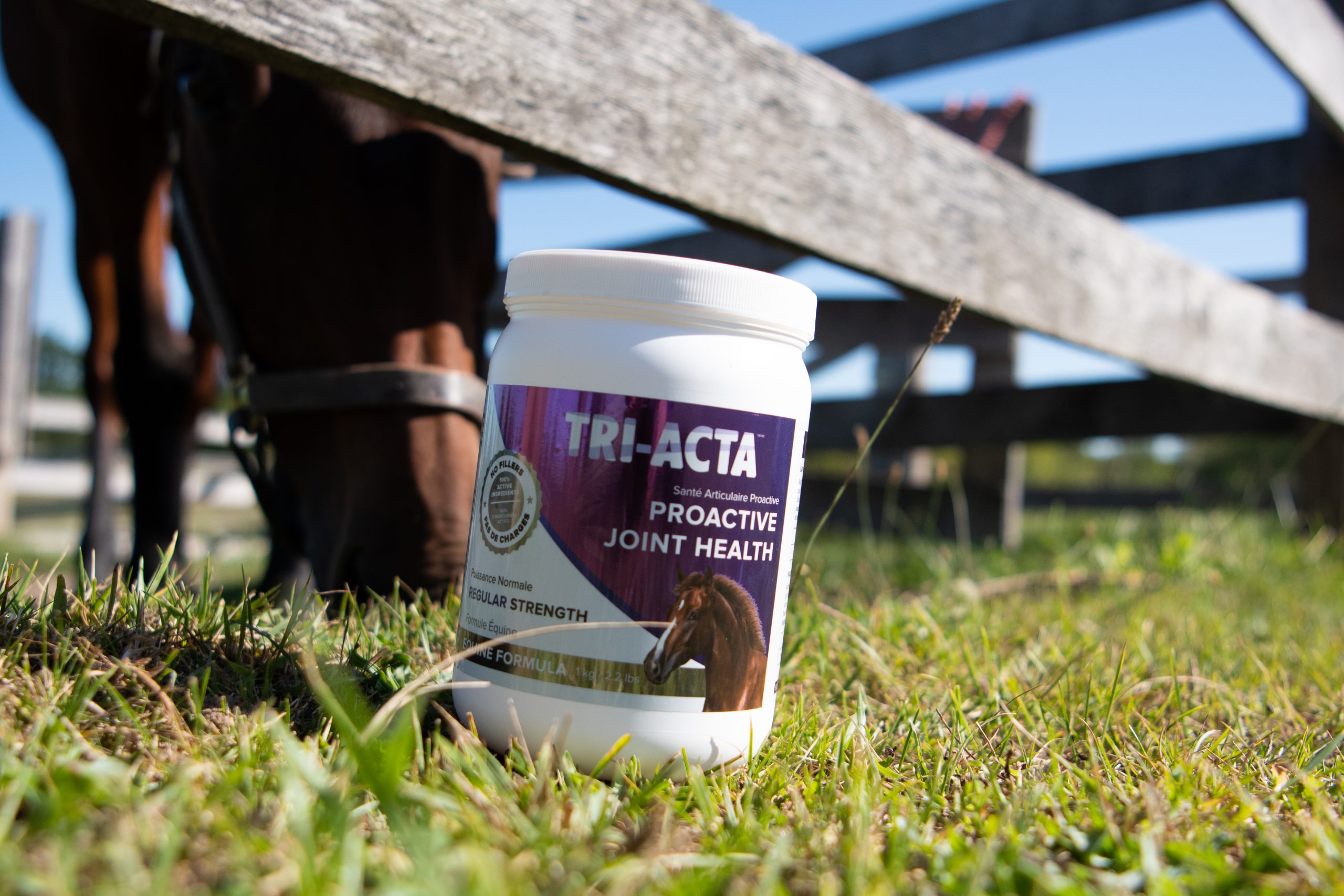
Supplements take your standardbred horses’ racing to the next level. When you’re trying to prep like a pro, you’d be remiss to skip adding a horse joint supplement to your routine.
But why a joint supplement specifically? Because when horses are racing towards the finish line, their limbs rely on healthy joints to keep them moving and moving fast. They need to be able to have strong, supple joints in order to push past the finish line.
The thing is you can’t trust any old supplement to do the job right. You need to find a quality horse supplement to make the difference between zero and hero.
A high-quality horse supplement should be:
- Lab-tested
- Easy to feed to your horse
- Contain a therapeutic dose
- Offer high quality, pure ingredients only (no fillers)
- Have reviews and data to back up claims
Integricare’s TRI-ACTA products check off everything on that list, offering your horse a dose of joint health-boosting ingredients including glucosamine, chondroitin, and MSM.
You get not only great ingredients, but also the peace of mind from choosing a product that’s backed by the knowledge that it’s third-party batch tested, Health Canada approved, and carries designation as a Veterinary Health Product (VHP). By choosing Integricare’s TRI-ACTA or TRI-ACTA H.A., you can rest easy knowing your supplement is as much of a winner as your horse is.
5. Find the Right Trainer
It can be challenging to know where to start when it comes to selecting a trainer to work with your standardbred racing horse. After all, you’re hoping to succeed and you need the right people on your team.
Before you hire a trainer, you should do a few things, especially if you’re new to standardbred horse racing:
- Network with experienced owners to learn about the industry
- Spend time observing racing and at racetracks in order to get comfortable with the sport
- Connect with an association like Standardbred Canada to learn more about the sport itself, and to tap into their resources on events, sales, and races.
After you have a good idea of the ins and outs of the sport, and you’ve connected with professionals near you, it’s time to hire a trainer.
When you’re hiring a trainer consider things like:
- Where does the trainer work out of or stable their other horses?
- What is the trainer’s specialty (trotters or pacers)?
- How much time do you want to spend and communicate with the trainer?
- Do you want to be hands-off, or do you want to be consulted often?
- Is help required from the trainer in making decisions and attending sales?
- What is the rate the trainer charges?
- Does the trainer have connections with other professionals in the area (like vets)?
Above all, make sure you’re comfortable with who you choose. Asking questions, and for a few references can be helpful in finding the right trainer for your needs.
Standardbred Racing Injury Prevention Tips
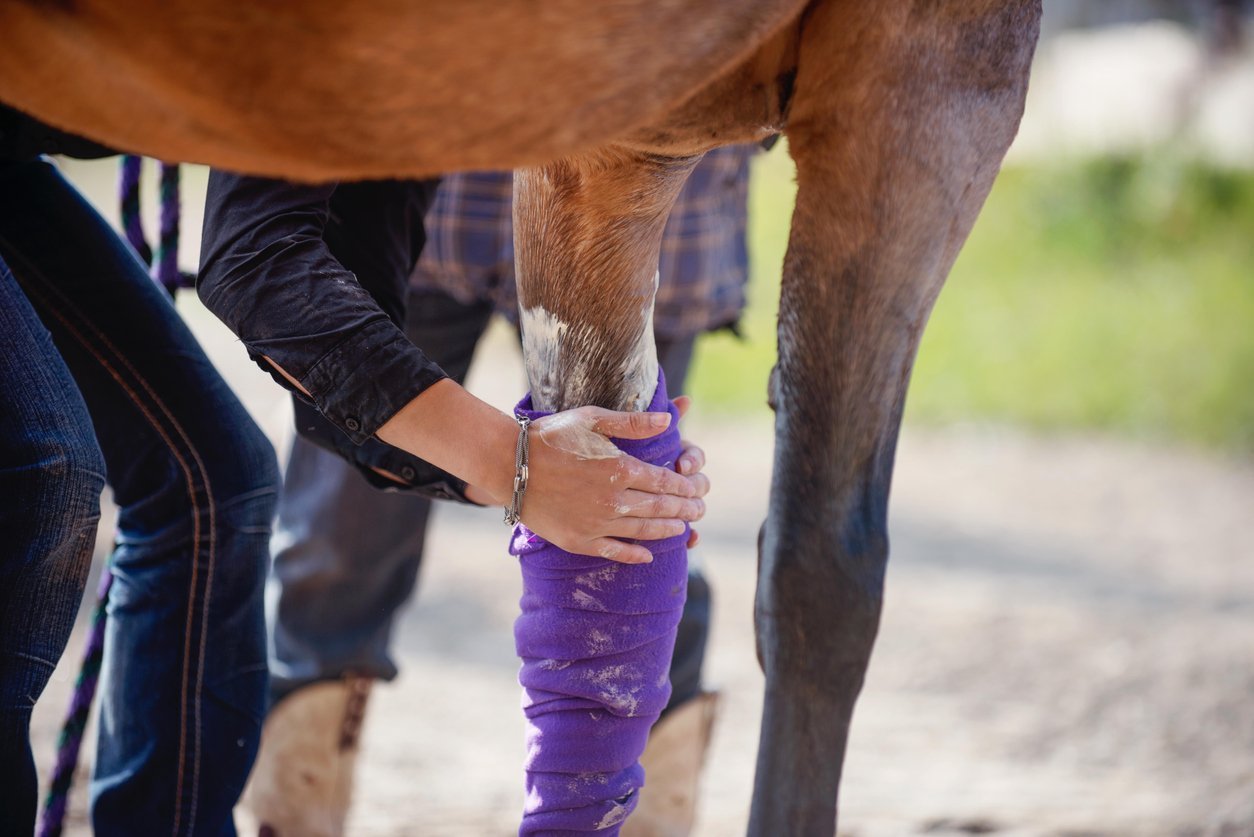
Nothing will stop your horse from making it to the finish line like an injury. In fact, they can even stop your horse from getting to the starting line in the first place.
Preventing standardbred harness racing injuries are important to the success of your horse now and in the future.
So let’s stop horsing around and get to the tips you need to keep in mind for preventing an injury.
Maintain a Training Schedule
Consistency is key. Your horse needs to train on a regular basis in order to improve their chances of winning — and avoiding injury, too.
By training regularly, you can build strong horse muscle to support their joints, and keep them in shape for races.
Your trainer will set a schedule and what they need to work on but here’s a few training basics to keep in mind:
- Ensure to include a jog every other day, somewhere between three and six miles.
- Train your horse in the opposite direction to what they race in
- On race mornings, be sure to walk them for about 15 minutes as a warm-up
- When not training, turn your horse out in the pasture for gentle exercise and stretching
- Variation can keep it interesting for your horse and yourself, but always ensure they have been able to master one skill before moving on to the next one
- Make sure you don’t injure your horse by pushing them to their limits before they are ready
Don’t Forget About Rest
Though it may seem strange to say rest is one of the most important parts of a proper training schedule, you can’t improve without it.
Training essentially creates microtears and breaks your horse’s muscles down. The way your horse’s muscles repair themselves is the process that helps them build stronger muscles, to begin with. By resting, you allow those muscles to get stronger and less injury-prone.
That doesn’t mean you should do nothing at all on rest days. That can be bad, too. Problems like tying up can stem from sedentary lifestyles, so offer your horse a gentle walk in the pasture and ensure their muscles get a bit of a stretch every day, regardless of rest or not.
Try Alternative Therapies
Sometimes there are signs your horse is experiencing a minor injury, like a strain, that can be a warning of worse injuries to come, especially if it is not dealt with right away.
Think of when you injure yourself. You might compensate by bearing weight on the opposite side of your body. Horses do the same. That can end up making things worse, or even causing a different injury altogether.
Regular preventative maintenance such as TRI-ACTA joint supplements can treat minor injuries and stop them from worsening, as well as get your horse into good shape for fighting off other injuries. Particularly by investing time in caring for their muscles can ensure their ligaments, joints, and tendons have less strain on them — making severe injury less likely.
There are alternative therapies specifically designed for recovery and care of horses who race including:
- Laser therapy:
- Acupuncture
- Chiropractic
- Massage
They can be complementary to conventional horse medicine and provide extra support to your horse alongside a good diet, regular vet checks, and consistent training.
Feed a Standardbred Horse Supplement
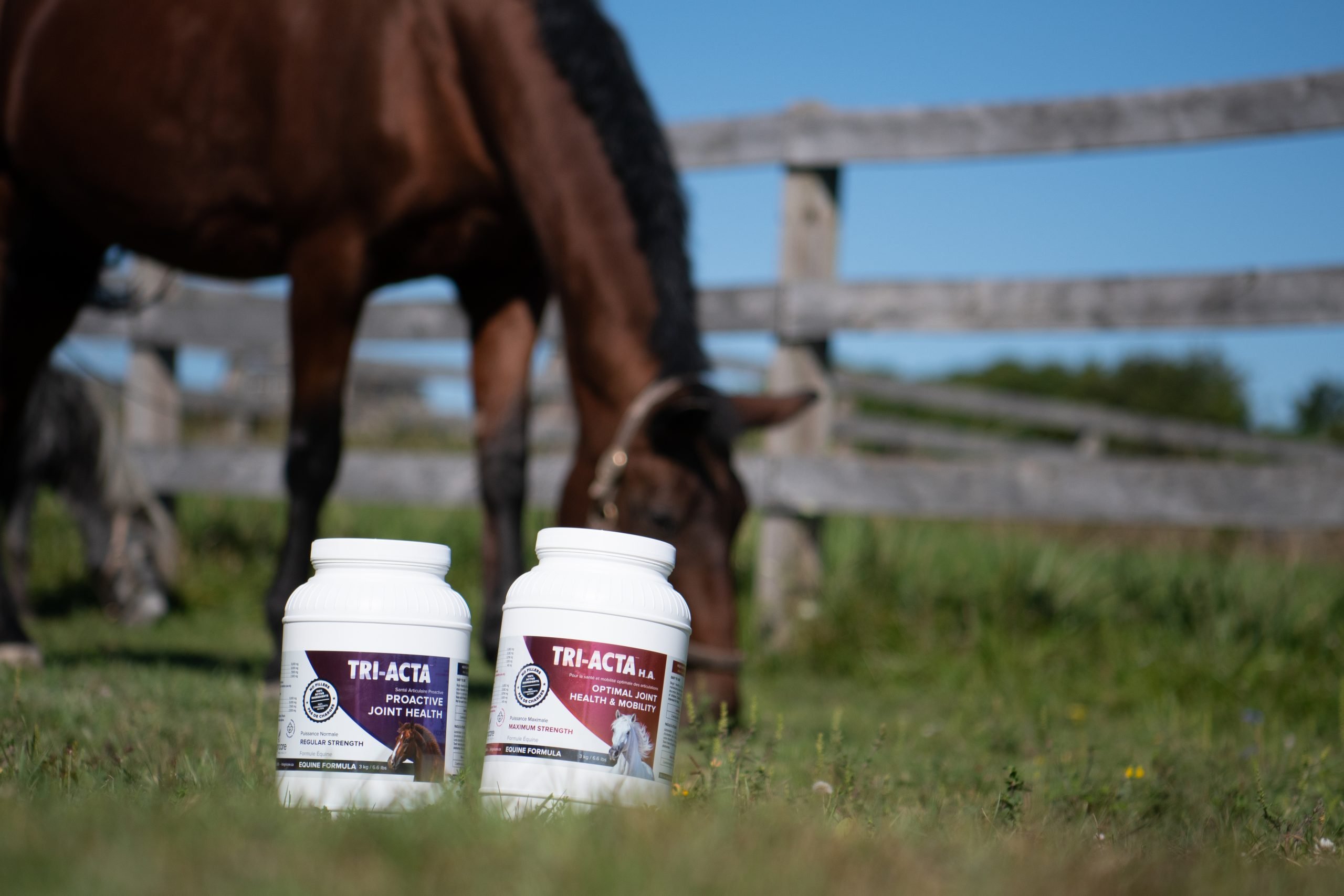
If you’re wondering how to protect your horse from the inside out from injuries, a supplement can help.
Supplements allow you to make up for deficiencies in their diet, such as vitamins or minerals, or to support a specific concern such as joint health. Joint health is the key to a standardbred’s success after all, so it only makes sense to promote joint health and improve recovery time by making it part of their daily routine.
The first step to doing better is knowing better as they say, so learn how to read a supplement label before you venture out. This will help you search for the key ingredients and see past lofty claims.
Supplements designed for improving the joint health of your standardbred racing horse should include the ingredients found in the table below.
| Active Ingredient | Benefit to Standardbred Racing Horses |
| Glucosamine | Able to help repair cartilage |
| Chondroitin | Stops cartilage breakdown and prevents further degradation |
| Methylsulfonylmethane (MSM) | Helps to reduce pain and inflammation |
Supplements like Integricare’s TRI-ACTA line of products offer you high-quality ingredients that don’t get lost in a list of fillers and allow you to serve a small dose every day that packs a therapeutic punch.
If you need to support the health of a horse who has been injured before or performs at a high level, Integricare’s TRI-ACTA H.A. should contain another powerful joint health supporting ingredient — hyaluronic acid. This improves the quality of synovial fluid in the joints, lubricating the joint and helping make your horse more mobile overall.
Consult the Experts
A standardbred racing horse is not only just any old investment but a living one.
Just like any investment it takes maintenance, knowledge, and effort to succeed. So if you don’t take care of your horse, and invest the time in understanding their needs, you won’t exactly be benefiting from their winnings anytime soon. Investing in your horse means investing in a team of professionals as well. This includes vets, trainers, and farriers.
These are the professionals you need to consult often, and while it’s important to educate yourself to know what to expect in scenarios from training to race day, you need to lean on their wisdom and experience.
Here are a few tips on finding your team of professionals:
- Network with other standardbred enthusiasts and owners, and hang out at the racetrack often. Not all trainers advertise their services online, and often word of mouth is a good way to find horse pros trusted by your community.
- If you’re not sure where to start, always turn to a professional association like Standardbred Canada, which can help you understand how to connect with a licensed trainer.
- When it comes to finding an equine vet, you can often look up providers in your province in a registry, or find reputable, well-reviewed options online.
- In order to make sure your horse is getting the best care possible, you should choose a farrier that is accredited by the International Association of Professional Farriers. You can search for accredited providers online, but keep your ear to the ground when networking with the equine community near you as a personal recommendation can mean a lot when it comes to your horse.
- Never be afraid to interview multiple professionals before settling on your dream team.
- Communication is key to success with your team! Keep in touch with your pros, and make sure they connect with each other before making decisions to avoid a silo effect.
Get Your Standardbred Racing Horse to the Winners Circle
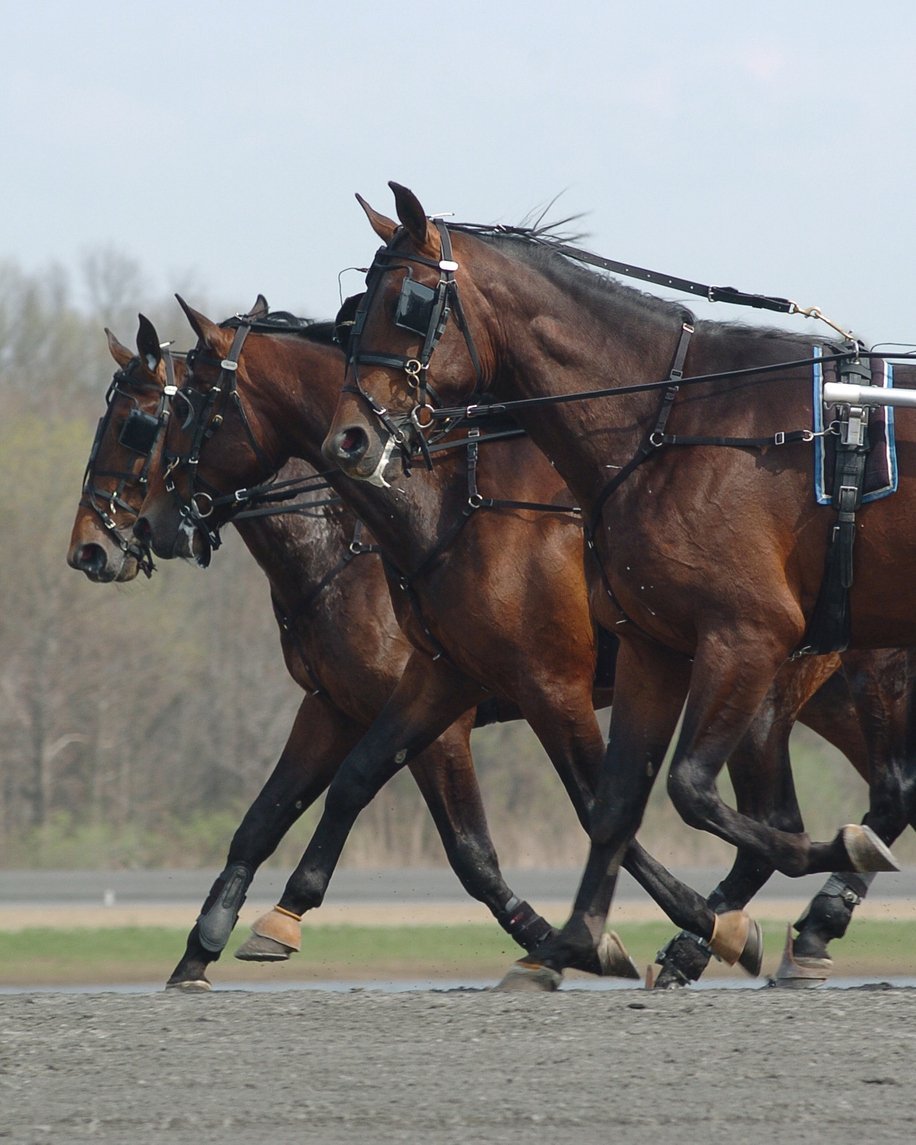
Now you have a primer on standardbred harness racing, you can take all you’ve learned and help your horse cross the finish line.
Before you harness up though, you know you need to get your horse in the best shape possible. One thing that helps get them there? A horse supplement.
High-quality horse supplements like Integricare’s TRI-ACTA and TRI-ACTA H.A. offer your horse a therapeutic dose of ingredients that support the health of their muscles, tendons, and joints. And we know how important that can be in horse racing. One injury can take your horse out of the races today and in the future.
Find out where to buy our products, and if you have any questions, get in contact with us and we’ll do our best to help answer them.
Newsletter Signup
Subscribe to our newsletter to receive the latest news and exclusive offers.
.jpg?height=2000&name=Cliick_Integricare-DISPLAY-REVISEDV2%20(1).jpg)
Proactive & Therapeutic Joint Supplements
When given daily, Integricare joint supplements recover bone and joint injuries faster and help prevent mobility injuries from happening in the first place.

